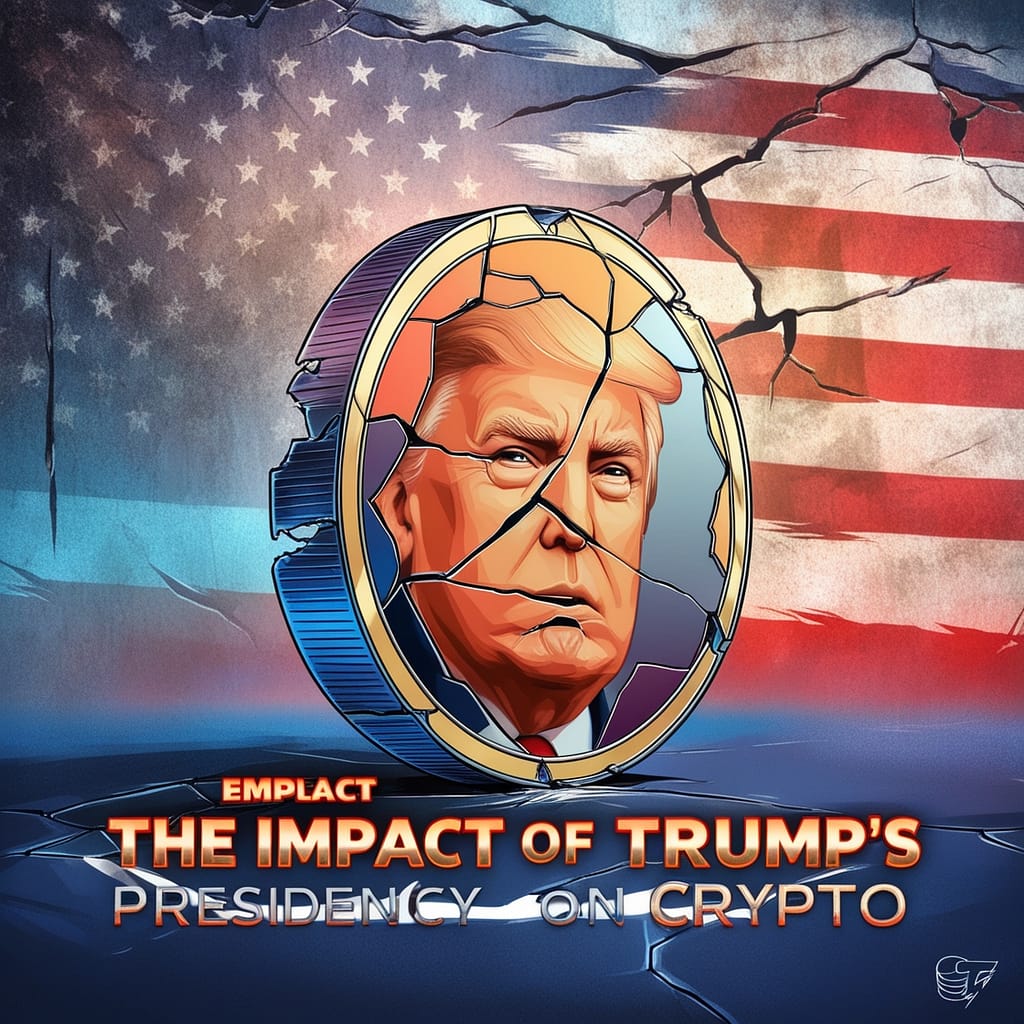The presidency of Donald Trump, which lasted from January 2017 to January 2021, marked a significant period of evolution within the cryptocurrency landscape. Trump’s policies, rhetoric, and leadership style had various implications for the cryptocurrency market, influencing everything from regulatory frameworks to public perception. This article delves into the multifaceted impact of Trump’s presidency on the crypto sector, exploring key events, policy shifts, and market trends.
1. Market Volatility and Speculation
Trump’s presidency was characterized by considerable economic volatility, which extended into the cryptocurrency market. The initial surge in Bitcoin prices in late 2017 coincided with Trump’s tax reform policy and broader discussions about deregulation. Investors began to speculate wildly on cryptocurrencies, viewing them as potential hedges against inflation and economic instability.
Bitcoin reached an all-time high of nearly $ 20,000 in December 2017. This surge was partly attributed to the optimism surrounding Trump’s economic policies, including tax cuts and deregulation. Many saw cryptocurrencies as a new paradigm of financial freedom and innovation, offering an alternative to traditional banking systems.
However, the high volatility of the cryptocurrency market also led to significant fallout. In 2018, Bitcoin’s price plummeted to around $ 3,200, leading to a prolonged bear market. While the intrinsic factors behind this downturn were manifold, the uncertainty surrounding Trump’s presidency, including trade wars and regulatory ambiguity, contributed to investor apprehension. 📉
2. Regulatory Landscape
One of the most significant impacts of Trump’s presidency on cryptocurrencies was the evolution of the regulatory landscape. Trump’s administration demonstrated a generally cautious stance towards regulation in many sectors, including finance. However, the positions of key figures within the administration presented a mixed picture.
Jerome Powell, appointed as chair of the Federal Reserve by Trump, emphasized a wait-and-see approach to cryptocurrency regulation. Meanwhile, former SEC Chairman Jay Clayton took a more proactive stance, urging for clear regulatory guidelines. Clayton’s tenure saw increased scrutiny of initial coin offerings (ICOs), which were prevalent during the crypto boom of 2017. His focus on protecting consumers highlighted the need for regulations, but it also caused uncertainty in the market. Investors and entrepreneurs alike were left uncertain about the future of ICOs and the legality of various token offerings.
Trump himself made headlines in July 2019 when he tweeted that he was “not a fan of Bitcoin and other Cryptocurrencies.” This unexpected statement created immediate backlash within the crypto community, triggering a sharp decline in Bitcoin’s price. This highlighted the profound influence that presidential remarks can have on market sentiment. 🌪️
3. Blockchain and Technology Initiatives
Despite the contentious regulatory environment, Trump’s presidency also saw a broader acknowledgment of blockchain technology’s potential. In 2020, the White House published a report emphasizing blockchain’s possible applications in various sectors, including supply chain management, healthcare, and finance. This official recognition of blockchain technology underscored its relevance and potential beyond the realm of cryptocurrencies.
The Trump administration’s interest in blockchain was not devoid of controversy. As part of a national security strategy, there were discussions about developing a U.S. central bank digital currency (CBDC). While this initiative had not gained significant traction by the end of 2020, it laid the groundwork for future discussions on digital currencies at the federal level. This was an indication that, while Trump was skeptical of cryptocurrencies like Bitcoin, the administration did recognize the underlying technology’s value. 💡
4. Global Competition and Economic Strategy
Trump’s “America First” policy extended into the crypto space, influencing how the United States approached digital currencies on the global stage. His administration’s rhetoric often portrayed cryptocurrencies as a threat to the dollar’s dominance, particularly in the context of international trade and finance. This perception propelled discussions about regulatory measures aimed at safeguarding the U.S. dollar against potential competition from cryptocurrencies and foreign digital currencies, particularly as countries like China began exploring their own digital currencies.
China’s announcement of a digital yuan in late 2019 added pressure on the U.S. to respond. Trump’s administration recognized the need for America to remain competitive in technology and finance, thus igniting a wider discussion about the future of the dollar in an increasingly digital world. The potential rise of a global digital currency ecosystem, particularly led by foreign powers like China, spurred U.S. lawmakers and regulatory agencies to consider their positions on digital currencies more seriously.
5. Public Perception and Adoption
Under Trump’s presidency, public perception of cryptocurrency experienced a complex evolution. With high-profile endorsements from various celebrities and investors, along with the proliferation of media coverage, interest in cryptocurrencies surged. However, Trump’s critical view of Bitcoin and concerns from governmental agencies regarding scams and Ponzi schemes contributed to skepticism among the general population.
The ultimate result was a dichotomy: while many young investors and tech enthusiasts rallied behind the promises of innovation that crypto offered, traditional investors often viewed it as a speculative bubble. The volatility and media frenzies surrounding Bitcoin and other cryptocurrencies led to a polarized understanding of digital assets among the general public. 🤷♂️
Conclusion
In summary, the impact of Trump’s presidency on cryptocurrency was multifaceted and complex. His tenure witnessed significant market volatility, a tumultuous regulatory environment, and growing public interest in digital currencies. While Trump’s skepticism towards cryptocurrencies sparked debates and fears among investors, his administration’s acknowledgment of blockchain technology signified a potential path forward for innovation.
The dynamic nature of Trump’s approach—oscillating between skepticism and recognition of technology’s promise—reflected the broader tension within the U.S. regarding how to embrace digital currencies while safeguarding traditional financial systems. As the cryptocurrency landscape continues to evolve, the effects of Trump’s presidency will likely be felt for years to come, shaping regulatory frameworks, market practices, and public perceptions as the world navigates the digital revolution. 🚀
This exploration into the impacts of political leadership on the cryptocurrency market underscores the importance of regulatory clarity and public understanding as digital assets become increasingly integrated into the global economy. With new administrations and evolving policies on the horizon, the future of cryptocurrency remains an area ripe with potential—and uncertainty.




